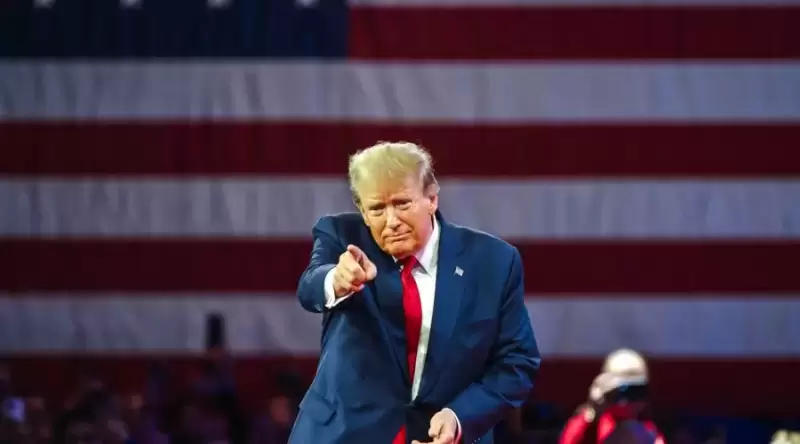 |
|
 |
|
 |
|
 |
|
 |
|
 |
|
 |
|
 |
|
 |
|
 |
|
 |
|
 |
|
 |
|
 |
|
 |
|
ブロックチェーン上のデジタルトークンを使用して実物資産の所有権を表現する資産トークン化は、資産管理における変革力として注目を集めています。資産のトークン化は、アクセスの民主化、市場の効率性の向上、セキュリティの強化を可能にする可能性があるため、継続的な探求と開発の対象となっています。主な利点には、より包括的な参加を可能にする分割所有権、合理化されたトランザクションプロセスのコスト削減、ブロックチェーンテクノロジー固有のセキュリティと透明性が含まれます。ただし、規制の不確実性、市場での採用、運用の複雑さなどの課題を効果的に導入するには、ブロックチェーンの専門家、従来の金融リーダー、規制当局による共同の努力が必要です。

Asset Tokenization: Unlocking the Potential of Traditional Assets in the Digital Age
資産のトークン化: デジタル時代における従来の資産の可能性を解き放つ
As the realm of finance evolves, blockchain technology has emerged as a potent force, enabling the creation of digital assets known as tokenized assets. This innovative approach to asset management holds immense promise in transforming the investment landscape, merging the worlds of cryptocurrencies and traditional finance.
金融の領域が進化するにつれて、ブロックチェーン技術が強力な力として台頭し、トークン化された資産として知られるデジタル資産の作成を可能にします。資産管理に対するこの革新的なアプローチは、仮想通貨の世界と従来の金融の世界を融合させ、投資環境を変革する上で大きな期待を抱いています。
What is Asset Tokenization?
資産のトークン化とは何ですか?
Asset tokenization involves the conversion of ownership rights for real-world assets into digital tokens. These tokens represent a stake in the underlying asset, be it physical property like real estate, digital art, or even intangible assets such as equity shares. The tokenization process enables fractional ownership, allowing investors to acquire shares of high-value assets that were previously inaccessible due to their exclusive nature.
資産のトークン化には、現実世界の資産の所有権をデジタル トークンに変換することが含まれます。これらのトークンは、不動産、デジタル アートなどの物理的資産、さらには株式などの無形資産など、原資産への出資分を表します。トークン化プロセスにより分割所有が可能になり、投資家は独占的な性質のために以前はアクセスできなかった高額資産の株式を取得できるようになります。
The Role of Blockchain Technology
ブロックチェーン技術の役割
Blockchain, the underlying technology of cryptocurrencies like Bitcoin and Ether, forms the bedrock of asset tokenization. Its decentralized nature and immutable ledger system provide a secure, transparent, and fraud-resistant platform for tracking asset ownership and transferring tokens. The decentralized structure eliminates the need for intermediaries, fostering greater trust and reducing the risk of malicious activity.
ビットコインやイーサなどの暗号通貨の基礎となるテクノロジーであるブロックチェーンは、資産のトークン化の基盤を形成します。その分散型の性質と不変の台帳システムにより、資産の所有権を追跡し、トークンを転送するための安全で透明性があり、不正行為に耐性のあるプラットフォームが提供されます。分散型構造により仲介者の必要性がなくなり、信頼性が高まり、悪意のある活動のリスクが軽減されます。
The Tokenization Process
トークン化プロセス
The journey from real-world asset to digital token on a blockchain involves several steps:
現実世界の資産からブロックチェーン上のデジタル トークンへの移行には、いくつかの手順が含まれます。
- Token Creation: Legal entities are established to hold the underlying asset. Digital tokens are created to represent shares of ownership in these entities, entitling holders to a proportionate share of the asset's value and benefits.
- Smart Contract Implementation: Smart contracts govern all aspects of token issuance, balance tracking, and reward distribution. These self-executing programs run on the blockchain, đảm bảo transparency and efficiency.
- Token Distribution and Sale: Once the tokens and smart contracts are in place, they are sold to investors through private or public sales. Fractionalization enables tokenized assets to reach a broader market, boosting liquidity.
- Asset Management and Governance: Token holders actively participate in managing the underlying asset, whether it involves property maintenance, tenant relations, or investment decisions. The charter of the holding entity and smart contract protocols define the level of control and voting rights granted to token holders.
- Secondary Market Trading: Tokenized assets can be traded on secondary markets, offering investors greater flexibility and liquidity. Unlike traditional asset transactions, these trades can be executed swiftly and easily, without the need for lengthy processes or the sale of the entire asset.
Benefits of Asset Tokenization
トークンの作成: 原資産を保持するために法人が設立されます。デジタル トークンは、これらのエンティティの所有権のシェアを表すために作成され、保有者に資産の価値と利益の比例したシェアを与える権利を与えます。 スマート コントラクトの実装: スマート コントラクトは、トークンの発行、残高追跡、および報酬の分配のすべての側面を管理します。これらの自己実行プログラムはブロックチェーン上で実行され、透明性と効率性を高めます。 トークンの配布と販売: トークンとスマート コントラクトが整備されると、それらは非公開または公開販売を通じて投資家に販売されます。分割により、トークン化された資産がより広範な市場に流通し、流動性が高まります。資産管理とガバナンス: トークン所有者は、不動産の維持、テナントとの関係、投資決定など、原資産の管理に積極的に参加します。持株会社の憲章とスマートコントラクトプロトコルは、トークン保有者に付与される管理と議決権のレベルを定義します。流通市場取引: トークン化された資産は流通市場で取引でき、投資家に優れた柔軟性と流動性を提供します。従来の資産取引とは異なり、これらの取引は、時間のかかるプロセスや資産全体の売却を必要とせず、迅速かつ簡単に実行できます。資産トークン化の利点
Asset tokenization extends far beyond technological innovation; it holds the potential to reshape asset management, bringing forth a myriad of benefits:
資産のトークン化は技術革新をはるかに超えています。資産管理を再構築し、無数のメリットをもたらす可能性を秘めています。
- Democratization of Access: By breaking down barriers to entry, asset tokenization empowers individuals with the opportunity to participate in investment markets previously reserved for institutional investors and high-net-worth individuals. Fractional ownership allows retail investors to invest in high-value assets, diversifying their portfolios and accessing new investment avenues.
- Market Fluidity and Efficiency: Tokenization enhances market liquidity and efficiency by introducing fractional ownership. It makes illiquid assets like real estate readily accessible, allowing investors to buy and sell tokens representing fractional ownership. Blockchain technology and smart contracts streamline the transaction process, reducing intermediaries, transaction times, and costs, resulting in 24/7 global markets for tokenized assets.
- Security and Transparency: Blockchain's decentralized nature provides unparalleled security, eliminating the risk of tampering and enhancing investor confidence in the integrity of their holdings and transactions. The transparent nature of blockchains safeguards against fraud by making all wallet holdings and transactions visible in real time, enabling easy identification and evaluation of any unauthorized activity.
Use Cases for Asset Tokenization
アクセスの民主化: 資産のトークン化は、参入障壁を打ち破ることにより、これまで機関投資家や富裕層向けに用意されていた投資市場に個人が参加する機会を与えてくれます。分割所有権により、個人投資家は高価値資産に投資でき、ポートフォリオを多様化し、新しい投資手段にアクセスできます。市場の流動性と効率性: トークン化により、分割所有権を導入することで市場の流動性と効率性が向上します。これにより、不動産などの非流動性資産に簡単にアクセスできるようになり、投資家が分割所有権を表すトークンを売買できるようになります。ブロックチェーンテクノロジーとスマートコントラクトは取引プロセスを合理化し、仲介業者、取引時間、コストを削減し、その結果、トークン化された資産の年中無休の世界市場が誕生します。セキュリティと透明性:ブロックチェーンの分散型の性質により、比類のないセキュリティが提供され、改ざんのリスクが排除され、投資家の信頼が高まります。保有と取引の完全性において。ブロックチェーンの透明性により、すべてのウォレットの保有とトランザクションがリアルタイムで可視化され、不正行為の容易な識別と評価が可能になるため、不正行為から保護されます。資産トークン化のユースケース
The versatility of asset tokenization extends to a wide range of asset classes:
資産トークン化の多用途性は、幅広い資産クラスに拡張されます。
- Tokenized Real Estate: Real estate is a prominent example of an asset poised to benefit from tokenization. It eliminates the need for large upfront investments and complex loan arrangements, allowing investors to access high-value properties with greater ease. Tokenization opens up commercial real estate investment to a broader investor base, enhancing liquidity in a traditionally illiquid market.
- Tokenized Bonds: Tokenization streamlines the bond issuance process and automates management aspects such as interest payments and maturity settlements. It leads to increased efficiency and accessibility in bond markets by reducing intermediaries and transaction costs.
- Tokenized Carbon Credits: Carbon credits are financial instruments representing businesses' emission reductions. Tokenization enhances the transparency and efficiency of carbon credit markets, facilitating the buying and selling of credits by businesses of all sizes. This approach unlocks new opportunities within the green economy by broadening the pool of potential participants.
Risks and Challenges
トークン化された不動産: 不動産は、トークン化の恩恵を受ける準備ができている資産の顕著な例です。これにより、多額の先行投資や複雑な融資手配の必要がなくなり、投資家はより簡単に高価値の不動産にアクセスできるようになります。トークン化により、商業用不動産投資がより幅広い投資家層に開かれ、伝統的に流動性の低い市場での流動性が強化されます。トークン化された債券: トークン化により、債券発行プロセスが合理化され、利息の支払いや満期決済などの管理面が自動化されます。仲介コストと取引コストを削減することで、債券市場の効率性とアクセスしやすさの向上につながります。トークン化された炭素クレジット: 炭素クレジットは、企業の排出量削減を表す金融商品です。トークン化により炭素クレジット市場の透明性と効率性が向上し、あらゆる規模の企業によるクレジットの売買が容易になります。このアプローチは、潜在的な参加者のプールを拡大することにより、グリーン経済内で新たな機会を生み出します。リスクと課題
While asset tokenization presents a wealth of opportunities, it is not without its challenges:
資産のトークン化は豊富な機会をもたらしますが、次のような課題がないわけではありません。
- Regulatory Uncertainty: Digital asset regulation remains a fluid landscape in many jurisdictions, including the United States. This uncertainty can create risks for tokenized asset issuers and purchasers, especially in cross-border transactions involving multiple jurisdictions.
- Market Adoption and Liquidity: The promise of increased liquidity in tokenized assets is contingent upon widespread market adoption. Without investor trust in tokenized assets and blockchain technology, combined with the necessary infrastructure, market development may be hindered.
- Current Security Risks: Despite the inherent security of blockchain technology, some crypto projects face security threats, mainly related to the hacking of DeFi protocols. While institutions may address these concerns by employing private blockchains, it may result in trade-offs that reduce the potential benefits of asset tokenization.
- Operational Complexity: Asset tokenization introduces new complexities in integrating traditional asset management strategies with blockchain technologies. Investors and issuers need robust wallet infrastructure, potentially different from current technologies, to manage their tokenized assets.
- Valuation Concerns: The valuation of tokenized assets, especially in niche asset classes or those lacking established, liquid markets, can be challenging. This may lead to unexpected volatility or pricing discrepancies, potentially impacting investor returns and market stability.
- The Education Gap: A significant knowledge gap exists in the market, with many potential investors and participants unfamiliar with asset tokenization, its benefits, and its risks. Overcoming this barrier is crucial for the widespread adoption and success of asset tokenization.
Overcoming Challenges
規制の不確実性: デジタル資産の規制は、米国を含む多くの法域において依然として流動的な状況です。この不確実性は、特に複数の管轄区域が関与する国境を越えた取引において、トークン化された資産の発行者と購入者にとってリスクを生み出す可能性があります。市場の採用と流動性: トークン化された資産の流動性の向上は、市場で広く採用されるかどうかにかかっています。必要なインフラストラクチャと組み合わせた、トークン化された資産とブロックチェーン技術に対する投資家の信頼がなければ、市場の発展が妨げられる可能性があります。 現在のセキュリティリスク: ブロックチェーン技術の本質的なセキュリティにもかかわらず、一部の暗号プロジェクトは、主に DeFi プロトコルのハッキングに関連するセキュリティの脅威に直面しています。金融機関はプライベート ブロックチェーンを採用することでこれらの懸念に対処できるかもしれませんが、資産トークン化の潜在的な利点が減少するトレードオフが生じる可能性があります。運用の複雑さ: 資産トークン化により、従来の資産管理戦略とブロックチェーン テクノロジーを統合する際に新たな複雑さが生じます。投資家と発行者は、トークン化された資産を管理するために、現在のテクノロジーとは潜在的に異なる堅牢なウォレット インフラストラクチャを必要としています。評価に関する懸念: トークン化された資産の評価は、特にニッチな資産クラスや確立された流動性の高い市場が不足している資産クラスでは困難になる可能性があります。これにより、予期せぬボラティリティや価格の不一致が生じ、投資家の収益や市場の安定性に影響を与える可能性があります。 教育ギャップ: 潜在的な投資家や参加者の多くが資産のトークン化、その利点、リスクに慣れておらず、市場には重大な知識のギャップが存在します。この障壁を克服することは、資産のトークン化を広く採用し成功させるために非常に重要です。課題の克服
Addressing the challenges associated with asset tokenization requires collaborative efforts:
資産のトークン化に関連する課題に対処するには、次のような協力的な取り組みが必要です。
- Collaboration and Innovation: Collaboration between blockchain technology experts, traditional finance leaders, and regulators is essential to ensure the productive and secure advancement of asset tokenization.
- Regulatory Clarity: Establishing clear and consistent regulatory frameworks will provide guidance for tokenized asset issuers and investors, fostering market growth and innovation.
- Education and Awareness: Comprehensive education programs and awareness campaigns will empower potential investors and market participants with the knowledge necessary to make informed decisions.
- Technological Advancements: Ongoing advancements in blockchain technology and digital asset security will address current challenges, enhancing the security and reliability of tokenized assets.
Asset Tokenization Today: Examples
コラボレーションとイノベーション: ブロックチェーン技術の専門家、従来の金融リーダー、規制当局間のコラボレーションは、資産のトークン化を生産的かつ安全に進めるために不可欠です。規制の明確さ: 明確で一貫した規制枠組みを確立することで、トークン化された資産の発行者と投資家に指針を提供し、市場を育成します。教育と啓発: 包括的な教育プログラムと啓発キャンペーンにより、潜在的な投資家や市場参加者が情報に基づいた意思決定を行うために必要な知識を得ることができます。技術の進歩: ブロックチェーン技術とデジタル資産のセキュリティにおける継続的な進歩により、現在の課題に対処し、セキュリティが強化されます。とトークン化された資産の信頼性。今日の資産トークン化: 例
Numerous asset tokenization projects are currently underway, bridging the gap between crypto and traditional finance:
現在、暗号通貨と従来の金融の間のギャップを埋めるために、数多くの資産トークン化プロジェクトが進行中です。
- Securitize: Utilizing the Ethereum blockchain, Securitize offers a platform for issuing various types of security tokens.
- Ondo Finance: Ondo provides access to tokenized tradfi assets, such as short-term U.S. Treasuries, through its on-chain Ondo Short-Term US Government Bond Fund.
- Centrifuge: Centrifuge is a dedicated blockchain enabling individuals and businesses to borrow against tradfi assets from DeFi-based lenders.
- Onyx by JP Morgan: JP Morgan's permissioned blockchain, Onyx, facilitates the trading of tokenized assets like U.S. Treasuries and mortgage-backed securities, along with JP Morgan's JPM Coin, a U.S. dollar-pegged stablecoin for interbank payments.
- Goldman Sachs: Goldman Sachs' Digital Assets Platform, developed in collaboration with blockchain software provider Digital Asset, supports the issuance, registration, settlement, and custody of various tokenized assets on the Canton Network blockchain purpose-built for digital asset management.
Asset Tokenization: The Future of Finance
Securitize: Ethereum ブロックチェーンを利用して、Securitize はさまざまな種類のセキュリティ トークンを発行するためのプラットフォームを提供します。 Ondo Finance: Ondo は、オンチェーンの Ondo 短期米国国債を通じて、短期米国国債などのトークン化された tradfi 資産へのアクセスを提供します。 Fund.Centrifuge: Centrifuge は、個人や企業が DeFi ベースの貸し手から tradfi 資産に対して借入できるようにする専用のブロックチェーンです。JP モルガンの Onyx: JP モルガンの許可されたブロックチェーンである Onyx は、米国債や住宅ローン担保証券などのトークン化された資産の取引を容易にしますゴールドマン・サックス: ブロックチェーン・ソフトウェア・プロバイダーのデジタル・アセットと協力して開発されたゴールドマン・サックスのデジタル資産プラットフォームは、さまざまな資産の発行、登録、決済、保管をサポートしています。デジタル資産管理専用に構築された Canton Network ブロックチェーン上のトークン化された資産。資産のトークン化: 金融の未来
Asset tokenization is a transformative force in the financial realm, poised to revolutionize asset management. Its potential for merging the worlds of crypto and traditional finance is immense, opening up access to a broader range of investment opportunities while fostering efficiency and security.
資産のトークン化は金融分野における変革力であり、資産管理に革命を起こそうとしています。暗号通貨の世界と従来の金融の世界を融合する可能性は計り知れず、効率性とセキュリティを促進しながら、より幅広い投資機会へのアクセスを開きます。
As challenges are addressed through collaboration, innovation, regulation, and education, asset tokenization is set to reshape the way we invest, trade, and manage assets in the digital age.
コラボレーション、イノベーション、規制、教育を通じて課題に対処する中で、資産のトークン化は、デジタル時代における資産の投資、取引、管理の方法を再構築することになります。
免責事項:info@kdj.com
提供される情報は取引に関するアドバイスではありません。 kdj.com は、この記事で提供される情報に基づいて行われた投資に対して一切の責任を負いません。暗号通貨は変動性が高いため、十分な調査を行った上で慎重に投資することを強くお勧めします。
このウェブサイトで使用されているコンテンツが著作権を侵害していると思われる場合は、直ちに当社 (info@kdj.com) までご連絡ください。速やかに削除させていただきます。


























































